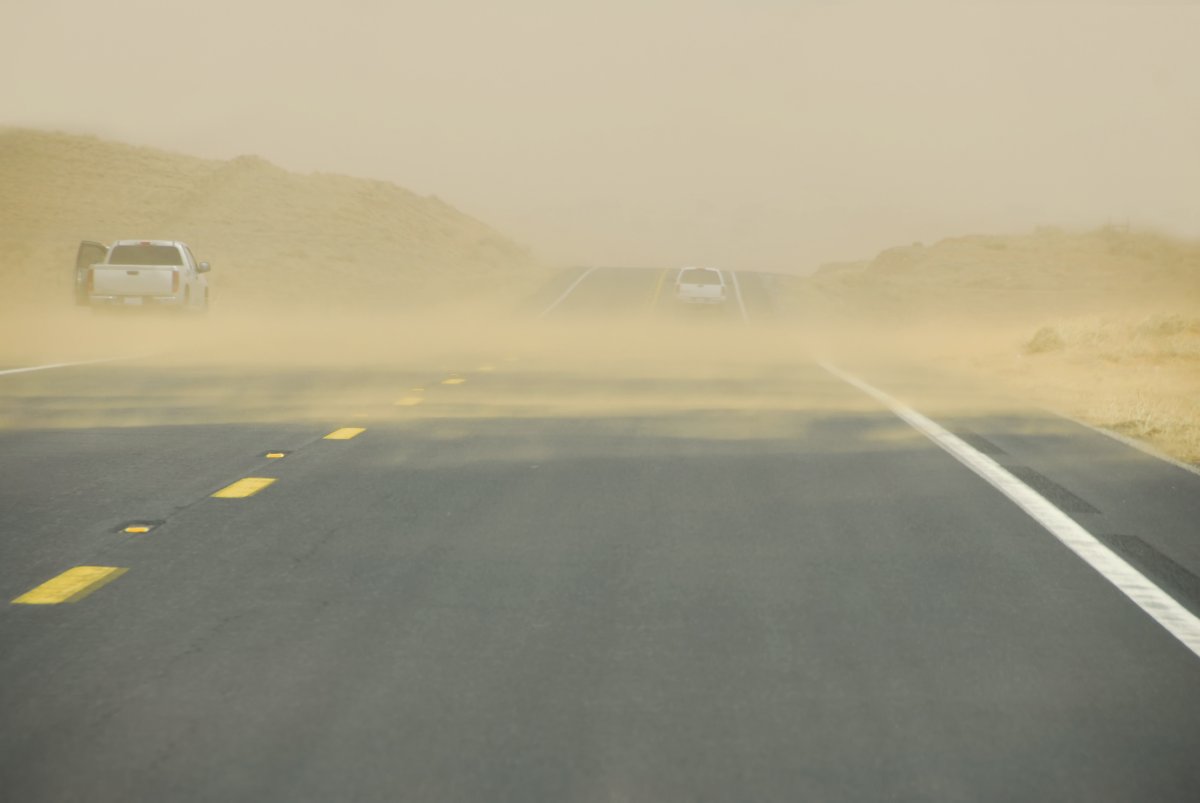More than 1 million people in southern Arizona were asked to pull over on Wednesday should they encounter a sudden dust storm, which can become a “significant hazard” and drop the visibility to near zero.
Why It Matters
Blowing dust events reduced roadway visibility rapidly, increasing the risk of multi-vehicle crashes and rollovers on intercity highways and rural roads. The advisories named Interstate 10 corridors—specifically through the San Simon Valley and the stretch between Tucson and Phoenix—as areas of elevated hazard. The combination of strong gusty winds and suspended dust also posed health risks to people with heart disease and respiratory conditions, as the advisories noted that dust would be inhaled by nearby people and animals.

digital94086/Getty
What To Know
The advisories covered the Tucson metro area and multiple valleys and counties in southern Arizona and urged those with respiratory sensitivities to limit outdoor exertion, as inhaling the dust could exacerbate respiratory conditions. Officials cautioned that organized thunderstorm outflows could produce haboob-like conditions, creating sudden drops in visibility that posed a “significant hazard to motorists.”
The National Weather Service (NWS) office in Tucson issued blowing dust advisories for large portions of southern Arizona on Wednesday, warning that strong thunderstorm outflows could produce gusts of 40-45 mph, reduce visibility to between one-quarter and one mile and create hazardous driving conditions through the afternoon and evening.
Drivers facing blowing dust were instructed to “pull off the road as far as possible and put your vehicle in park,” and to “turn the lights all the way off and keep foot off the brake pedal.”
The advisory was put in place for western Pima County, the Tohono O’odham Nation, the Tucson metro area, the Upper Santa Cruz and San Pedro valleys, eastern Cochise County below 5,000 feet and parts of Pinal and Graham counties under a blowing dust advisory from 2 p.m. to 11 p.m. MST on Wednesday.
The NWS Phoenix office issued a blowing dust advisory for northwest Pinal County from 5 p.m. to 9 p.m. MST the same day and retained an Extreme Heat Warning until 8 p.m. MST.
In addition to posing hazards to motorists, some health conditions could be worsened by the dust storm. Persons with respiratory problems were advised to remain indoors until the storm passed. The advisories recommended reducing outdoor exertion for people with heart or respiratory disease. People should also keep windows and doors closed.
Strong storms also brought dust to parts of Cochise County on Tuesday night, according to a post on X by NWS Tucson.
What People Are Saying
NWS meteorologist Kevin Strongman told Newsweek: “If you’re encountering a dust storm, it’s best to pull aside, turn your engine off, lights off, foot off the brake. That’s the best way to stay safe in a dust storm if it comes today.”
NWS Tucson in a blowing dust advisory: “Persons with respiratory problems should make preparations to stay indoors until the storm passes. Be ready for a sudden drop in visibility to near zero. If you encounter blowing dust or blowing sand on the roadway or see it approaching, pull off the road as far as possible and put your vehicle in park. Turn the lights all the way off and keep foot off the brake pedal. Remember, ‘Pull Aside, Stay Alive.'”
What Happens Next
Authorities anticipated that outflow-driven blowing dust would move westward across southeast Arizona during the afternoon, then affect central Pima and southeast Pinal counties in the late afternoon and evening. Motorists in the impacted areas were urged to remain alert and follow local weather guidance.
Strongman said a wet weather pattern will arrive later this week, and incoming rain will reduce the dust risk.
